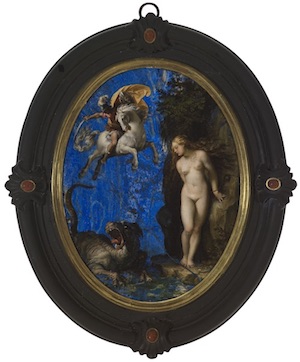Wednesday, September 19, 2018 - 12:00pm
Room 202, Frick Fine Arts Building
"(Epi)Phenomenal Objects: Painted Stones In Early Modern Europe"

In the pre-modern period, painting was always connected stones and minerals. One of the earliest discussions of painting in the Western tradition was found in Pliny’s ancient encyclopedia, in which the discussion of painting arose out of a concern for the mineral rocks that were ground up to provide artist with pigments. Painting, for Pliny, was an epiphenomenon of stone. This is a point that pre-modern artists rarely forgot.
Around 1530, Italian artists began painting on large slabs of hewed stone. Stone had not been used as a support for large format, independent easel paintings in the Western tradition prior to that date. Nor does this phenomenon seem to be foreshadowed anywhere in the history of global art more generally. At first, Italian artists used monochrome stones of a dark hue, especially slate. However, around 1600 they began to use a number of colored stones like onyx, amethyst, jasper, and lapis lazuli. Of course, such semi-precious stones were highly valued in early modern Europe. On the one hand these stones testified to the generative power of Natura Artifex; on the other, they were precious commodities whose material splendor was itself a thing of value. The choice to withdraw these stone from the economy of precious materials and to insert them into the prestige economy of manmade artifacts merits attention. This paper will consider the artistic and meta-artistic implications of the choice to paint on stones like lapis lazuli, which were used by artists as the basis for pigments. Such paintings complicate received narratives regarding a shift that supposedly occurred in the Renaissance from appreciating previous materials to valuing the hand of the artist. Moreover, considering the lithic substrate of paintings on stone raises fundamental questions about the nature of mimesis in early modern Europe.
